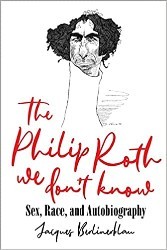By
– April 26, 2012
In 2013 Philip Roth will be eighty and The Library of America will complete, on acid-free paper, its re-publication of his oeuvre. Permanence invites reassessment, so the critical community has begun assessing, for posterity, the thirty-one books they praised or protested during Roth’s six-decade career. His pivotal work, which shaped and was shaped by America’s pivotal decade, is Portnoy’s Complaint (1969). And as Bernard Avishai implies in the title to his parsing of Portnoy, while Roth’s readership took promiscuity (literally, the pro-mixing of disparate elements) for promise, Roth’s answer to Spielvogel’s “Now vee may perhaps to begin. Yes?” was “No!” Roth “steps on his punch line” to show that “our pursuit of happiness” is “doomed.” Roth’s novel in the form of a psychoanalytic confession induced a generation to suspect, Hamlet-like, all attempts to “pluck out the heart of … [our]… mystery.”
In the 1960s modernism was breaking down because its rationalist tradition answered only palpable questions. Yet even Einstein had diminished his own authority by showing that physics was ultimately unknowable because the world has no beginning place. For Avishai, every rationalist has his irrational side. Ben Franklin publicly offered the morality of Poor Richard, but his letters privately licked the privates of women and declared them all interchangeable. Roth was analyzed by a German refugee psychiatrist who, seeing all problems from his own Freudian perspective, induced patients to win his approval by describing their domineering mothers and wimpy fathers. Unfortunately, Roth considered his own father a tower of strength and his mother a loving support. The upshot is that Portnoy confesses what Spielvogel wants to hear, but joins his author in sending up the failings of analyst and analysand — that is, the whole mystique of the talking cure.
Avishai draws on existing scholarship to recount the “wild blue shocker” that made Portnoy’s Complaint the talk of its time, but from Roth’s notebooks and Roth’s friendship he adds insight to what keeps Portnoy outselling Gatsby and Godfather to this day. It makes this reader long for at least one more post-LoA novel from the author who can best pro-mix those elusive paradoxes we sense to be truth.
In the 1960s modernism was breaking down because its rationalist tradition answered only palpable questions. Yet even Einstein had diminished his own authority by showing that physics was ultimately unknowable because the world has no beginning place. For Avishai, every rationalist has his irrational side. Ben Franklin publicly offered the morality of Poor Richard, but his letters privately licked the privates of women and declared them all interchangeable. Roth was analyzed by a German refugee psychiatrist who, seeing all problems from his own Freudian perspective, induced patients to win his approval by describing their domineering mothers and wimpy fathers. Unfortunately, Roth considered his own father a tower of strength and his mother a loving support. The upshot is that Portnoy confesses what Spielvogel wants to hear, but joins his author in sending up the failings of analyst and analysand — that is, the whole mystique of the talking cure.
Avishai draws on existing scholarship to recount the “wild blue shocker” that made Portnoy’s Complaint the talk of its time, but from Roth’s notebooks and Roth’s friendship he adds insight to what keeps Portnoy outselling Gatsby and Godfather to this day. It makes this reader long for at least one more post-LoA novel from the author who can best pro-mix those elusive paradoxes we sense to be truth.
Alan Cooper teaches English at York College, CUNY. Notable among his numerous contributions to periodicals, reviews, and books is his Philip Roth and the Jews (SUNY Press, 1996). His latest book is the young-adult novel Prince Paskudnyak and the Giant Bats.





